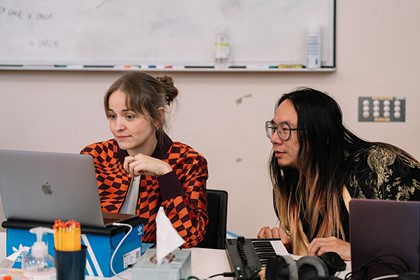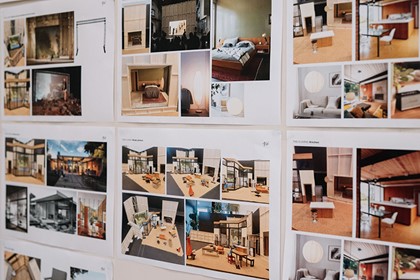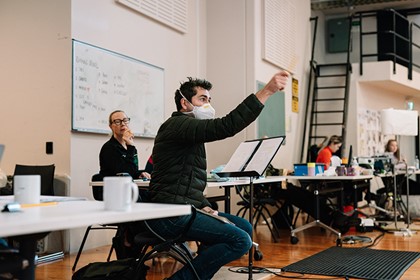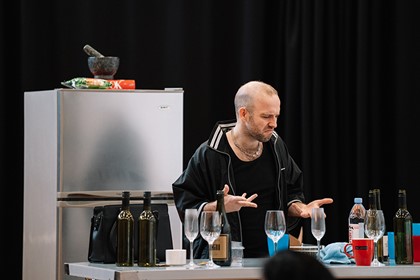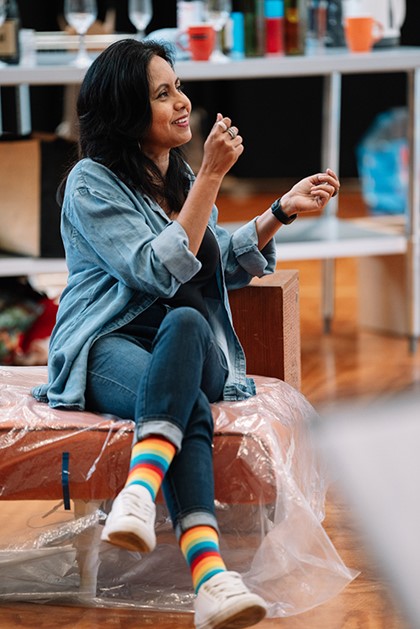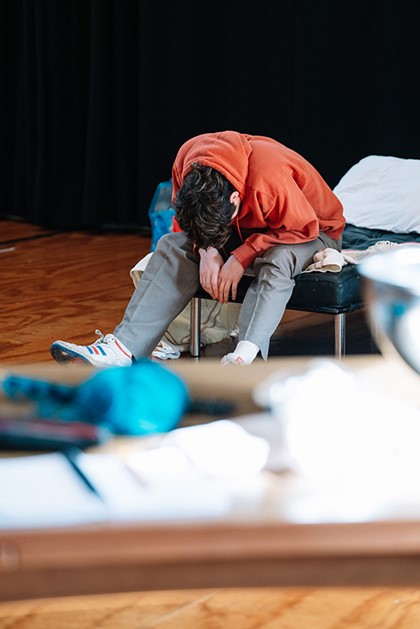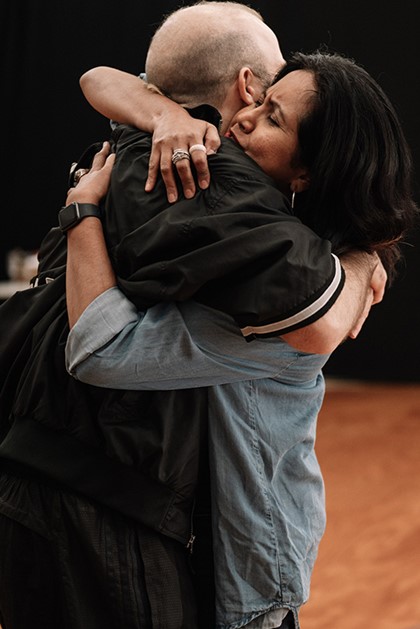IN PROCESS: Opening the theatrical universe of This is Living
Posted Jul 06, 2023
Artist in residence and Composer and Sound Designer of This is Living Joe Paradise Lui speaks to the dangers of reducing theatre to what is “needed” and to the vitality of discovery through design.
So there’s this truism, or saying, or bon mot, in theatre that goes something like:
“Does the play need it?”
And it often goes hand in hand with this other one:
“Does it support the text?”
And every time I hear either one of those things (and as a designer or director of any kind you’re going to hear these a bunch) I kinda twitch a bit.
The first one is frustrating because every first-year drama student knows that all theatre “really needs” is a performer, words, and an audience. Clearly, however, as a public and as participants in an artform there is a shared understanding that the kinds of things we enjoy or find meaning in go a fair way beyond what is “needed”. “Does the play need it?” closes off the possibilities of discovering what these things might be.
The second is a bit more nuanced, and my issue with it stems more from my personal understanding of theatre, rather than any feeling that the question is reductive or unhelpful.
I see myself primarily as a post dramatic or experimental theatre maker, and in that context, the traditional hierarchy of text as king of the meaning-making is continually and actively disrupted and subverted, with each element of the theatrical-machine gaining an agency in both the affective and meaning-making aspects of the audience experience of a work.
In a traditional theatre context, I become most interested in finding and exploring design ideas that chart their own dramaturgies, that create affect in parallel to the text, as opposed to strictly in service to it – opening the possibilities of the worlds, as opposed to reinforcing what is already there.
A large percentage of a theatre designer’s job is, or should be, dramaturgy.
When I taught lighting design at WAAPA I would get third-year students who were incredibly well versed in creating beautiful lighting moments. What I taught was how to stack these beautiful moments in a manner that created a feeling or meaning over time. Tension and release, development on a theme, setup, and payoff – across the two hours or so of a performance work, these are the concepts that make theatre design unique to do and is what sets it apart from designing lighting for photography, or composing music, for example.
The object of design is thus to open the world, expanding the possibility and feeling of the universe.
Can this go too far? Of course, and especially in a dramatic context it can wind up being confusing or at odds in an unhelpful way, but approaching design as a structured way of opening up gets me closer to the kind of art that I’m interested in making and collaborating with folk on.
Which brings me to This Is Living. The nature of this sound design is unique. It is gloriously intricate, subtle, and considered. It is also, to be honest, completely “unnecessary”, in the reductive definition of “unnecessary” that I’ve described. But it’s unnecessary in a way that invites a fascinating examination of the role of extra-performative elements of theatre.
Ash Flanders has written an amazing piece of dramatic theatre. This is a work of wonderful polish and quality. The writing is tight as a drum and hilarious. It is detailed and personal and heartfelt and cathartic and resists simplicity. Because life isn’t simple. It’s a complicated mess, and This Is Living revels in its complexity to great effect. It is “realism” at its finest and showcases the best of what theatre that centers language and performance can muster.
When Matt asked me to design this work, he came to me with an intriguing idea, that would not be out of place in the most stylized, abstract dreamscape of experimental theatre.
How could we create in a theatre, the kind of foley experience that we are used to in film? How might we hear the clink of glasses and the striking of a match with the same fidelity and clarity that we are accustomed to in popular media? And, having achieved that, how might we affect and warp that sound in subtle yet affective ways?
This has led me toward a sound design that is far more focused on what is felt than what is heard. I have had an opportunity to recently do an incredibly loud and boisterous composition and design for Melbourne theatre Company’s Is God Is, and while that was glorious and complicated for more obvious reasons, I love that if I do my job properly on This Is Living, you might leave the theatre not knowing that I had done any kind of job at all.
Of course, there are moments of loudness, but these generally exist as diegetic moments, rather than as a score trying to shift us through time or perspective.
Undiegetic composition has been left extremely sparse – and almost has the effect of starving an audience of a thing we are so conditioned to having. In the minimal moments in which composed sound is played, we latch on and focus laser like on an internality that is otherwise only implied in the rest of the play.
Most fascinatingly, the moments of warp and plasticity in the foley design are not congruent or related to the dramatic beats of the play - rather moments of elevated consciousness for the characters (by which I mean they get high and drunk.) This element of the design has been by far the most resource intensive. It’s the difference here between 1% heightened and 5% heightened – and the ~feeling of the tiniest stretch in reality. Having spent a lot of my career in various states of bombast, this has been such a joyful exploration into a level of subtlety not normally able to be resourced in theatre.
The sound world of This Is Living is wonderfully in sympatico with its textual world, while also following a separate dramaturgical track. I hope it has the effect of doing something that registers in the senses before a conscious knowing of what is going on – affect; in a word. In so doing it is my hope that there is a separate but parallel feeling that speaks to the overall themes of the play – of friendship, the contemplation of loss, what it is to love, - without necessarily being a “support” the dramatic movement of the play itself.
This Is Living is a beautiful dramatic play. It is “realism.” It is the exact kind of play that could be done with nothing more than the words and the performers. But in between the exquisite and painstakingly detailed set and costume design of Matilda Woodroofe, the lighting work of the one and only Paul Jackson, and my own humble contribution, I am reminded that design elements are performers that carry meaning and feeling, journey and tension.
